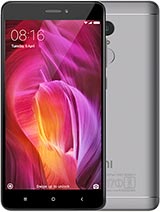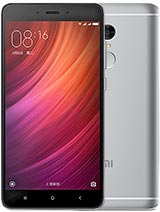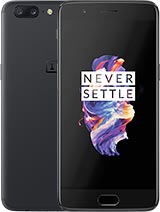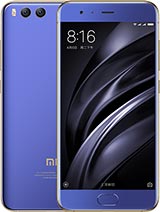Oppo R11 review: Selfie master
Selfie master

Final words
The Oppo R11 isn't trying too hard or doing anything special - the package is instantly familiar to anyone aware of the Oppo R9s. Less than a year has passed, and the Oppo R11 carefully improves upon and refines a predecessor that we quite liked.
The latest Android, a more recent chipset and a great camera bundle could be too much or too little depending on the situation. In the Oppo R11's case they're more than enough - especially coming on top of an AMOLED screen and VOOC charging.

The Snapdragon 660 readily delivers in terms of speed and performance. The R11 has not only gained an edge on its competitors, but is quite capable of challenging a few of the recent flagships. And while it doesn't stand out in the way of battery life, the endurance rating is reasonably good.
Elegance and simplicity define the R11's exterior, with no fancy finish but an extra-solid build. The R11 has Gorilla Glass 5 protecting the screen and more than enough grip thanks to the matte aluminum rear.
The cameras were the real surprise though- all three of them. The R11 is a selfie pro and its 20MP selfies, bokeh or not, have excellent quality and resolution to spare. The main camera is among the best we've seen in both broad daylight and at night in the city. The telephoto lens does a terrific job at portrait shots and 2x optical zoom. But creative flexibility is where Oppo really excels with this setup by allowing manual mode on both cameras.
Oppo R11 key test findings
- The aluminum body looks and feels great, flagship-worthy, the matte finish provides a secure grip. The improved antenna lines are one of the most elegant solutions lately.
- The display is as bright as the OnePlus 5's, but the colors are slightly oversaturated. Sunlight legibility is top notch. Gorilla Glass 5 is welcome and you'll hardly need the pre-applied screen protector.
- Battery life is good at 81 hours with consistently good performance in all tests.
- The user interface is a good blend of Android and iOS, with some useful touches in all the right places.
- Benchmark performance is superb for the class, really close to flagship grade.
- Audio output quality is great with external equalizers, only average with headphones. Average loudspeaker volume, but crisp and clear output.
- Still images from the primary cam are very detailed, with pleasing colors and good dynamic range. Very good low-light samples too. The tele cam all by itself is equally capable in daylight though the samples are not as sharp. It can't work in low-light though, unless used for long exposure photos. Portrait mode works well enough, and is very good at separating the subject and background.
- Class-leading selfies with impressive bokeh effect. Great detail, contrast, and colors, even the dynamic range is quite good.
- 4K videos have average detail but little noise and nice colors. 1080p/30fps mode has even less detail, but are equally good in terms of noise and colors. The audio at 96 Kbps is disappointing though. You can't shoot videos with the tele camera even though the camera interface makes you think you can - there's only digital zoom from the regular cam.
The R11 may have a claim on the pole-position in the midrange, but there are a few rivals eyeing the same spot.
The R11 comes without ingress protection, and this is where Samsung may have a viable alternative. The Galaxy A5 (2017) impresses with an AMOLED screen in an equally elegant - and water-proof - body. You won't get a telephoto camera and all of its related features, but the front and rear cams are still well-equipped for the class.
You can do cheaper with the Xiaomi Redmi Note 4 - a great all-round package delivering speed and performance at a bargain price. You won't get any of the R11 goodies, but if they aren't that important to you the Note 4 is a great offer.


Xiaomi Redmi Note 4 • Xiaomi Redmi Note 4 (MediaTek)
For some extra €100 one can get the OnePlus 5. It has an equally attractive design, a similar screen, and same camera setup, but powered the cutting-edge Snapdragon 835.
Xiaomi also has a take on the normal+tele camera experience alongside an improved screen and design. With the R11 you get an AMOLED screen and a midrange chipset, while the Mi 6 has a smaller IPS screen and the flagship-grade Snapdragon 835 under the hood. If the camera skills are your decision-maker, then the R11 might have an edge here thanks to richer options and better selfies.
Finally, there's no way to miss the Honor 9. Although cheaper than the flagship Huawei P10, it has pretty much the same hardware and an arguably more attractive exterior. There's no Leica, but it still comes with the high-res monochrome camera and offers optical-like zoom, portrait mode, and depth of field effects. Huawei is pretty much responsible for the dual-camera revolution and the Honor 9, for about €50 over the R11, will offer a flagship-worthy performance and stunning monochrome shots.
You can tell that we liked the Oppo R11. It's like Oppo was handed a wish-list and went on to check every box. Now, they didn't grant unlimited wishes - it's a midrange phone after all - but what's there more than makes sense. The R11 is sharp-looking and capable, equally good at the cool stuff and the routine tasks. With OnePlus climbing the ladder, the R11 would've made a pretty good candidate for the vacant flagship killer title. No, it's by no means a flagship - just one of those phones that simply click.
Reader comments
- Amit
- 25 Aug 2017
- 7kY
Killer phone one of the best smartphone
- AnonD-646111
- 31 Jul 2017
- D0H
Is wish if this specs would be in my phone -3D 5.5" inch super amoled display Corning gorilla glass 5 1080P screen resolution -Snapdragon 660 64GB 4GB DDR4 Ram -Dual sim + Sd card support -Volte -Nfc -12mp dual rear camera f1.7 with kis ...
- mr. debasish barman
- 25 Jul 2017
- 9xN
it was a great device till now,,,, but back side was funny look ,,need to inprove that



